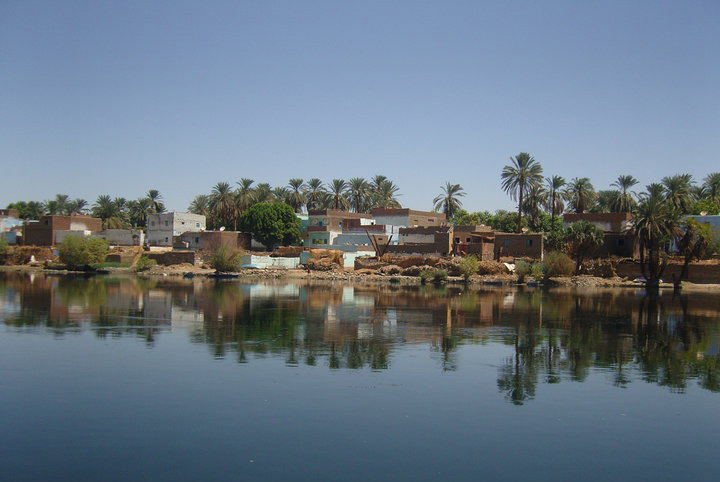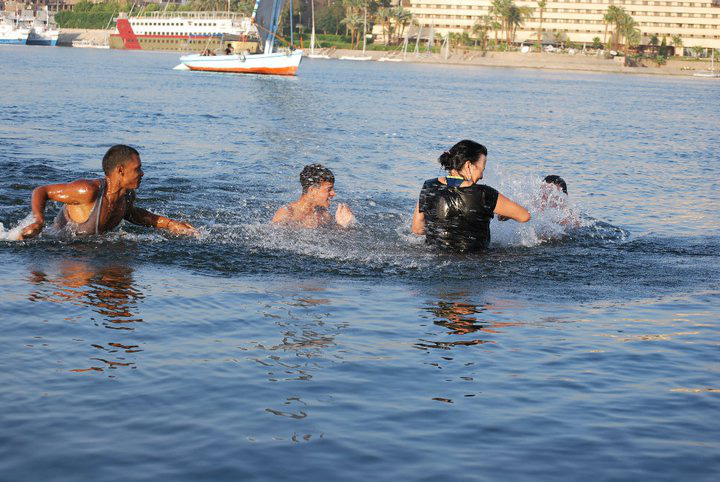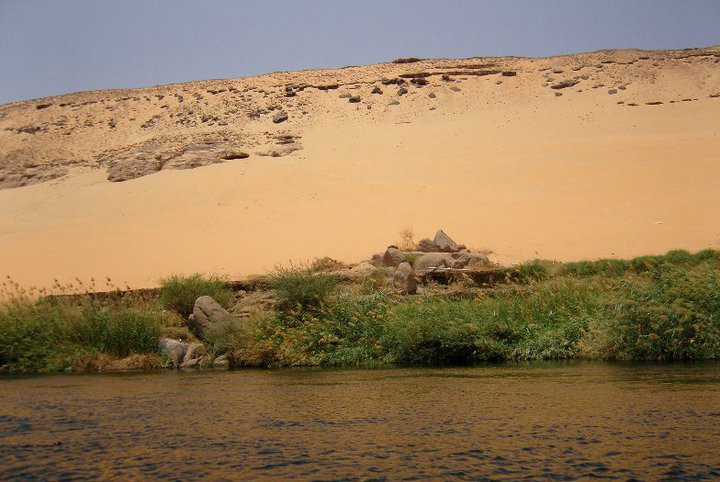
On the banks of the River Nile – water use and water efficiency in Egyptian villages
Posted on: September 2016Suzanne Armsden, Brighton University
Water use and water efficiency in Egyptian villages
Suzanne Armsden, Brighton University
Until a few years ago I lived in Upper Egypt within a small village community on the Eastern banks of the Nile opposite the granite ridge which forms the Valley of the Kings. The River Nile – which courses through over 10 countries – has always been the lifeblood of the average Egyptian. The waters of this great river flow from south to north – emptying finally into the Mediterranean Sea. Prior to the building of the Aswan Dam the annual flooding of the Nile (akhet “inundationâ€) between June and September, caused by the melting of the snow on the high Ethiopian Mountains coupled with a heavy summer rainfall, allowed the Egyptian people, after the floods had subsided, to cultivate many different crops in the thick black silt mud which the akhet left behind.
In everyday Egyptian village life the supply of water is essential both for washing purposes (the average Muslim prays 5 times a day and must wash themselves prior to prayer) and also for cooking/washing and drinking purposes. It is quite usual to find water fountains housed in stainless steel cooler units stationed outside someone’s house offering the chance to drink a cup of iced cold water. This service costs the householder but is free to the thirsty person walking down the street. It’s a fact that you cannot visit a neighbour in the village without being offered shay (tea) and the Egyptian culture means that it’s considered very rude for the guest to refuse or for the host to fail to offer it. You should also have water readily available to allow your guests to rid themselves of the dirt of their journey (important where most roads are unmade and where sheep and donkeys often roam freely). In the uncertain times following the Arab Spring a supply of water was also essential to keep the men guarding the entrance to the village supplied with tea and a cold drink so that they could adequately protect their families.
Water does not often fall from the sky in the form of rain in Egypt and when it does the children run out into the street and perform a type of rain dance, unlike the UK rain in Egypt causes celebrations! The first time I witnessed this I was truly astonished! Unfortunately its’ more often the lack of water which causes the village women to gossip amongst themselves – quite often the water company (which like all the utility companies in Egypt is run by the Government) – will send a representative around to each house in the village to tell the occupants to fill every container they have as the water will be cut off for a number of hours. The ensuing panic usually causes large scale disruptions to everyday life. These occurrences are becoming more frequent since the decline in tourism means that the average Egyptian is living on less than a dollar a day and cannot afford to pay the E£50 per month water bill. Likewise electricity outages are more frequent as the Government tries to claw back monies by cutting electricity for hours on end in order to punish those who have previously taken their electricity for free.
Inside the average Egyptian house you won’t find many water saving devices, in fact the only water saving device you are likely to see is a bucket under the sink (used by the household to wash prior to prayer or eating) which usually catches the drips from the often leaking plumbing! The average Egyptian is not aware of the need to be water efficient merely the on-going problem of how to pay his water bill on his meagre or non-existent income. The same can be said for the average Egyptian bathroom (el hammaam) where there is likely to be a basic squat toilet with a tap and a piece of hose to use for flushing and washing as toilet paper tends to block the drainage system, plus a basic shower head attached to another tap and a piece of hose, jubilee clips seem to form the standard plumbing kit in Egypt and the connections often fail. You should always take up the offer to use the bathroom flip flops prior to entering to avoid spending the rest of the day in damp, smelly sandals (always remember to leave the bathroom flip flops where you found them – leaving them on your feet and walking to another area of the house is not recommended unless you want the children laughing at you!)
But Egypt’s age-old right to use 90% of the water from the River Nile, leaving its neighbours such as Ethiopia prevented from using this vital resource, is now being threatened by the current political upheaval in Egypt. The Government has taken its’ “eye off the ball†and unless proper measures are taken to prevent water scarcity, to prevent pollution, and to engage the average Egyptian in water efficiency, the population could well be facing a major water scarcity problem perhaps as soon as 2020.






